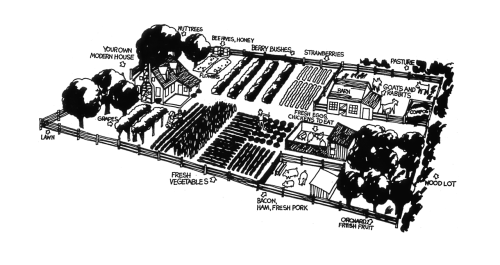The Leatherdos Is A Hair Clip That Doubles As A Multi-tool That Combines 5 Different Tools In A Tiny
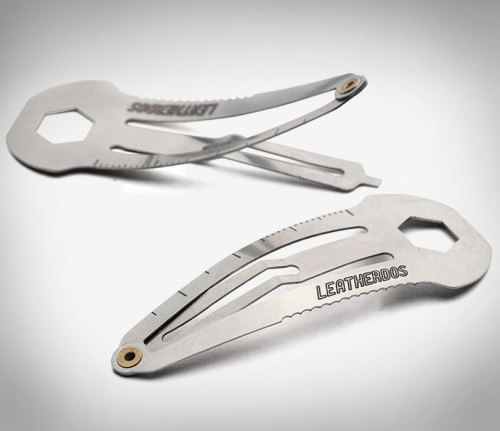
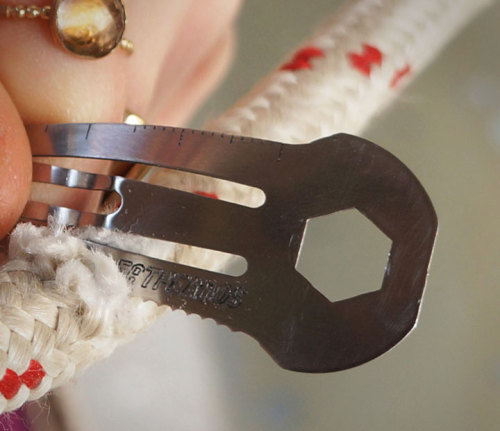
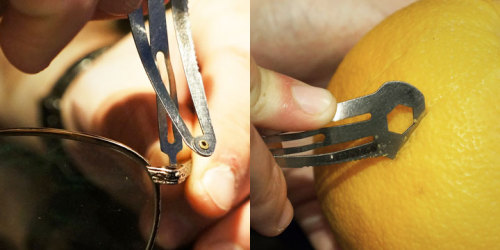

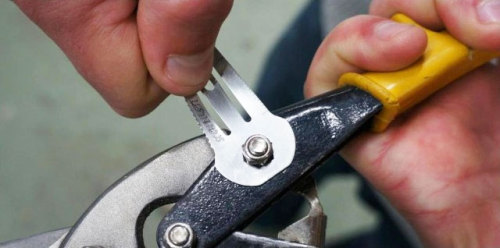
The Leatherdos is a hair clip that doubles as a multi-tool that combines 5 different tools in a tiny hair clip: screw-drivers, a wrench, a trolley coin, a ruler, and a cutting edge.
—->http://odditymall.com/leatherdos-is-a-hair-clip-multi-tool
More Posts from Copperfingertips and Others


Germany had so much renewable energy on May 8, 2016, that it had to pay citizens to use electricity. It was so windy and sunny that turbines and solar power sources were supercharged, output exceeded demand, and prices went negative, so customers were actually paid to consume energy. Source
Do you know how to take care of your sewing machine?
Taking care of your machine over the long haul influences the longevity of your machine. It could mean the difference of having a machine over the span of 5 years versus 50+ years. Can a sewing machine even last 50 years? Yes, with proper maintenance and care it can! My personal machine was released about 1960 making it 58 years old. My grandmother’s Singer Touch and Sew is around 50 years old and she uses that machine so much it’s ridiculous it’s still working!
So how do I take care of my machine?
Glad you asked! It’s really not that hard to take care of your machine, in fact, the instruction booklet that came with your machine probably tells you how. Some new machines make it really difficult to take them apart to clean them up, but you’re going to want to figure out how!
If your instruction booklet doesn’t tell you how to clean your machine, below are some pictures from my own instruction booklet. Most machines are very similar and you can generally follow the same instructions.



Here’s some general advice for cleaning your machine:
Firstly, dust out your machine. This means removing all the lint that gathered up from your last project (or projects). You can take compressed air and blow out your machine, or, like me, you can take a small, soft paint brush and gently brush it out.
Second, time to oil your machine! You can find sewing machine oil at almost any craft store. I recommend one with a zoom spout to make it easier to oil your machine.
So what do you oil? Pretty much any moving parts except gears and your belt. (Take a look at the pictures.) Work in the oil as you apply it by turning the hand wheel toward yourself. Also be sure not to put oil anywhere you would have thread or fabric moving through. Those places generally aren’t meant to be oiled and it will end up on your projects!!
Lastly, lubricate your gears. This is also a great time to check the condition of your gears. Gears wear down over time and I can say that I’ve had to replace gears before due to wear and tear. The teeth on the gears break with age (or improper machine use), although it can take a while before that happens.
LUBRICANT IS NOT THE SAME AS OIL. DO NOT OIL GEARS. NO. STOP. BAD. You can also buy this at your craft store, most likely.
How often should I be dusting and oiling my machine?
After every major project, or, if you’re working on a very large project (like a leather jacket), you might want to do it sporadically throughout.
How often should I lubricate my machine?
If you don’t use your machine frequently, once every two years is probably acceptable. I use my machine frequently enough to justify once a year.
OMG I FOUND BROKEN PARTS WHAT DO I DO?!
Google it. Most likely someone has already had the same problem and it’s probably documented somewhere on the internet just waiting for you to stumble across. Gears and belt replacements are the most common.
If you’re looking for Singer Sewing machine parts, I highly recommend ordering parts from www.singeronline.com. Not only are they reasonably priced, but their products are high quality. I’ve ordered many parts from this business and they have my star of approval. They also have a youtube channel and document some common problems with machines as well as how to fix them. Check it out: Singer Online YouTube
A lot of people are really scared and angry because of the results of the newest climate change reports — as they should be. But I’m already seeing a lot of posts and news reports like “HERE’S WHAT YOU CAN DO TO FIGHT GLOBAL WARMING” and bizarrely enough, the answers are never like “weed out climate change deniers from your government, impose strict new rules for the corporations that are creating most of the emissions, pour government resources into alternate forms of fuel, etc.” It’s always like “carpool to work!”
Look. Of course you should be working to reduce waste in your own life. But let’s not fucking pretend that consumers are the ones who made this mess. You know what another recent study found? Just 100 companies are responsible for 71% of global emissions. If the rest of us stopped ALL WASTE and fucking ascended to a higher plane of existence that no longer requires consumption of any kind, the world would still be absolutely fucked if those 100 companies keep on as they do.
I hate this personal responsibility model when it comes to conservation. By ignoring the actual source of the problem and focusing on individuals instead, guess who gets targeted? The absolute most vulnerable individuals on the planet. When people advocate personal responsibility, somehow they’re never talking about billionaires and their private jets. They’re creating straw bans that will make life more dangerous for people with disabilities. They’re shaming women for using disposable menstrual products. They’re criticizing the poor and destitute for using “wasteful” products because they’re all they can afford. They’re making vaguely eugenic statements about getting people in “third world countries” to stop ~breeding~ so much. It’s monstrous.
Stop shaming consumers for the sins of corporations and their powerful investors. Stop placing the blame at the feet of the people who already have the hardest time getting through life. Do something, and by “do something” I mean buy a reusable coffee cup on the way to fucking vote. Go to a protest. Call a representative. Demand accountability from the people who got us into this mess.

[Shameless self-promotion]
As we observe the winter solstice, my thoughts have turned to how solarpunks approach winter. As the days turn dark and cold, how does a society dependent on the sun continue to prosper?
Keep reading







the entire sinnoh region looks almost entirely like this


Clean energy technologies threaten to overwhelm the grid. Here’s how it can adapt.
The centralized, top-down power grid is outdated. Time for a bottom-up redesign.
The US power grid is, by some estimates, the largest machine in the world, a continent-spanning wonder of the modern age. And despite its occasional well-publicized failures, it is remarkably reliable, delivering energy to almost every American, almost every second of every day.
This is an especially remarkable accomplishment given that, until very recently, almost none of that power could be stored. It all has to be generated, sent over miles of wires, and delivered to end users at the exact second they need it, in a perfectly synchronized dance.
Given the millions of Americans, their billions of electrical devices, and the thousands of miles of electrical wires involved, well, it’s downright amazing.
Still, as you may have heard, the grid is stressed out. Blackouts due to extreme weather (hurricanes, floods, wildfires) are on the rise, in part due to climate change, which is only going to get worse. The need for local resilience in the face of climate chaos is growing all the time.
Unless old systems are reconceived and redesigned, they could end up slowing down, and increasing the cost of, the transition to clean electricity (and hampering the fight against climate change).
(via Renewable energy threatens to overwhelm the grid. Here’s how it can adapt. - Vox)
-
 reblogs-cats liked this · 2 weeks ago
reblogs-cats liked this · 2 weeks ago -
 motherofmajesticflapflaps reblogged this · 1 month ago
motherofmajesticflapflaps reblogged this · 1 month ago -
 agameofblogs liked this · 1 month ago
agameofblogs liked this · 1 month ago -
 dragononymous liked this · 2 months ago
dragononymous liked this · 2 months ago -
 o0space-turtle0o liked this · 3 months ago
o0space-turtle0o liked this · 3 months ago -
 gloomy-gores-world reblogged this · 3 months ago
gloomy-gores-world reblogged this · 3 months ago -
 chobanislimmyglimmies reblogged this · 3 months ago
chobanislimmyglimmies reblogged this · 3 months ago -
 garbage-goblin125 liked this · 4 months ago
garbage-goblin125 liked this · 4 months ago -
 otheeeeeers reblogged this · 8 months ago
otheeeeeers reblogged this · 8 months ago -
 cultural-derealization reblogged this · 8 months ago
cultural-derealization reblogged this · 8 months ago -
 beacuzz-i-can reblogged this · 8 months ago
beacuzz-i-can reblogged this · 8 months ago -
 why-must-i-be-like-this reblogged this · 8 months ago
why-must-i-be-like-this reblogged this · 8 months ago -
 stevies-universe liked this · 8 months ago
stevies-universe liked this · 8 months ago -
 wick-24 reblogged this · 9 months ago
wick-24 reblogged this · 9 months ago -
 darklycola liked this · 9 months ago
darklycola liked this · 9 months ago -
 nemoni-island liked this · 10 months ago
nemoni-island liked this · 10 months ago -
 vherasaan reblogged this · 10 months ago
vherasaan reblogged this · 10 months ago -
 nobody-in-their-right-mind liked this · 10 months ago
nobody-in-their-right-mind liked this · 10 months ago -
 ndnjutsu liked this · 10 months ago
ndnjutsu liked this · 10 months ago -
 ad-ya reblogged this · 10 months ago
ad-ya reblogged this · 10 months ago -
 madwhimsical reblogged this · 10 months ago
madwhimsical reblogged this · 10 months ago -
 deniz-the-jellyfish reblogged this · 10 months ago
deniz-the-jellyfish reblogged this · 10 months ago -
 deniz-the-jellyfish liked this · 10 months ago
deniz-the-jellyfish liked this · 10 months ago -
 fruithonorific liked this · 10 months ago
fruithonorific liked this · 10 months ago -
 lostlight-fm reblogged this · 10 months ago
lostlight-fm reblogged this · 10 months ago -
 francisfelidae reblogged this · 10 months ago
francisfelidae reblogged this · 10 months ago -
 francisfelidae liked this · 10 months ago
francisfelidae liked this · 10 months ago -
 lostlight-fm liked this · 10 months ago
lostlight-fm liked this · 10 months ago -
 whatinfaradisthinking reblogged this · 10 months ago
whatinfaradisthinking reblogged this · 10 months ago -
 gaylienz reblogged this · 10 months ago
gaylienz reblogged this · 10 months ago -
 gaylienz liked this · 10 months ago
gaylienz liked this · 10 months ago -
 pedestrianauto liked this · 1 year ago
pedestrianauto liked this · 1 year ago -
 bryainiac liked this · 1 year ago
bryainiac liked this · 1 year ago -
 inthehistoryofever reblogged this · 1 year ago
inthehistoryofever reblogged this · 1 year ago -
 poele47 liked this · 1 year ago
poele47 liked this · 1 year ago -
 sneesnoop reblogged this · 1 year ago
sneesnoop reblogged this · 1 year ago -
 the-oxrib-and-oyster liked this · 1 year ago
the-oxrib-and-oyster liked this · 1 year ago -
 easiepeas liked this · 1 year ago
easiepeas liked this · 1 year ago -
 wardrum reblogged this · 1 year ago
wardrum reblogged this · 1 year ago -
 adenthemage liked this · 1 year ago
adenthemage liked this · 1 year ago -
 ddeath648 reblogged this · 1 year ago
ddeath648 reblogged this · 1 year ago -
 tails-of-a-dragon-rider liked this · 1 year ago
tails-of-a-dragon-rider liked this · 1 year ago -
 esxcoria liked this · 1 year ago
esxcoria liked this · 1 year ago -
 quasinonymous reblogged this · 1 year ago
quasinonymous reblogged this · 1 year ago -
 quasinonymous liked this · 1 year ago
quasinonymous liked this · 1 year ago -
 stained-glass-sphinx reblogged this · 1 year ago
stained-glass-sphinx reblogged this · 1 year ago -
 allhailthedramallama reblogged this · 1 year ago
allhailthedramallama reblogged this · 1 year ago -
 allhailthedramallama liked this · 1 year ago
allhailthedramallama liked this · 1 year ago
